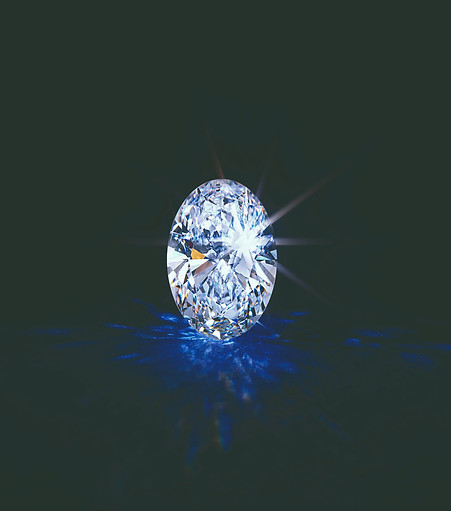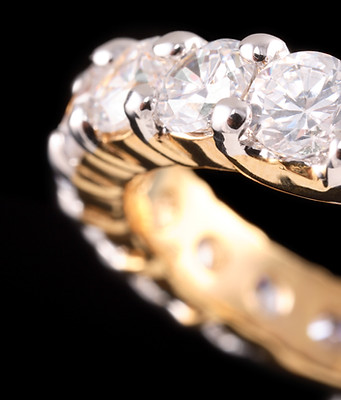

OPEN MONDAY - FRIDAY 10:00 AM - 5:00 PM
OPEN SATURDAYS BETWEEN THANKSGIVING - CHRISTMAS 10:00 AM - 3:00PM

Education

Jewelry Appraisals
A jewelry appraisal has several purposes:
- Can place a value for insurance purposes (this cannot be used for any other purpose or function)
- Be used to settle an estate or divorce
- Help determine a fair market value on a previously owned jewelry item (if you choose to do fair market value this will determine the selling price if you have a willing buyer, usually a private sale like between friends or family)
- Help determine a liquidation market value on a previously owned jewelry item (if you choose to do the liquidation market value this will determine what you could achieve as a quick sale with bottom dollar & have no time to wait)
An appraisal done at E.L. Menk Jewelers describes not only the value but also the quality and condition of the jewelry item. With the precious metal and gemstone markets constantly changing it is wise to have your jewelry appraised and updated every three to five years.
Ed Menk is a Graduate Gemologist of Gemological Institute of America and is constantly keeping abreast of the most current events in the jewelry industry to maintain a current knowledge of pricing as well as new gemstone treatments that may affect the value of gems.
Lab Grown Diamonds
Lab grown diamonds are grown above ground and have all of the same properties as a mined diamonds do. To get a lab grown diamond you first select a high-quality diamond seed then they are placed in a chemical vapor deposition chamber (like a greenhouse). Hydrogen is then added to the chamber and is ignited, causing methane to be introduced which is the source of Carbon for growing diamonds, after 12 weeks the diamond has grown layer after layer. The rough diamond is then precision cut by a laser then faceted into the desired shape and polished using the same tools you use for mined diamonds.
Precious Metals
Precious metals is a term used to classify metals such as Gold, Silver, and Platinum group metals that are more rare than other types of metals.
Gold - Au- Gold is a metal that has a metallic yellow hue to it and is malleable meaning it is easy to melt, carve or hammer into any shape making it perfect for the jewelry industry. Gold does not tarnish, oxidize or corrode over time.
Silver - Ag - Silver has a brilliant metallic white hue and does oxidize over time giving it a darker appearance.
Platinum - Pt - Platinum has a bright grayish white appearance and over time it gets a duller appearance but does not lose its color. Platinum is a hypoallergenic metal that should not cause an allergic reaction and over time it does not tarnish. Platinum is a heavy metal which weighs 60% more than 14kt gold and is one of the strongest and most enduring metals. If you had a 6 inch platinum cube and weighed it you would have 165lbs!
Rhodium - Rh- Rhodium has a shiny silvery white color and is part of the platinum family. Rhodium is a plating that is used to give jewelry a white shiny reflective appearance and eventually wears away and can be re done on white gold.
Ruthenium - Ru - Ruthenium is a metal that is part of the Platinum family and is silvery white in color. Ruthenium can be added in small amounts to platinum and palladium to strengthen the metal. Ruthenium is also rarer, more harder and more brittle than Platinum.
Iridium - Ir - Iridium is also part of the platinum family which is white in color and is hard, brittle and dense. This is used as an alloy to add to platinum to strengthen the metal.
Osmium - Os - Osmium is a shiny silver/grey metal that is part of the platinum group. This Metal is brittle and dense making it a great alloy to add to other metals to strengthen them.
Palladium - Pd - Palladium has a silvery-white hue to it and is lighter in weight than platinum and has a lower intrinsic metal cost. Palladium is one of 11 metals that are resistant to corrosion or oxidation. If you have a ring that is 10 grams in platinum it would be 5.82 grams in palladium.
Alternative Metals
Alternative metals have become a popular trend in jewelry, men's wedding bands especially. There are three main types of alternative metals used in jewelry.
Cobalt- Cobalt is the whitest of the alternative metals, and is hypoallergenic. Cobalt rates at an 8 the mohs scale of hardness making it shatter proof and very scratch resistant. Rings need to be ordered in the correct size as cobalt is not sizeable.
Tungsten Carbide- Tungsten carbide is the heaviest of the alternative metals and known for its scratch resistance. Tungsten carbide is grey in color and hypoallergenic. On the mohs scale of hardness it rates at a 9. Tungsten carbide also needs to be ordered in the correct size and is not sizeable.
Titanium- Titanium also grey in color is very lightweight and comfortable. It is hypoallergenic and will not tarnish or turn colors. It is rated a 6.75 on mohs scale of hardness. Titanium needs to be ordered in the correct size and is not sizeable.




The Cut
A diamond’s overall proportions, as well as the size and position of its facets, make up the cut. The consistency and balance of these can greatly affect how the stone captures light and reflects it back to the eye.
Studies have been conducted to find the optimum proportions of a diamond’s cut so that it has the greatest amount of sparkle. If its cut falls within these parameters, it is considered an ideal cut. Commonly used terms regarding refraction and light:
-
Brilliance—the combination of all of the white light reflected from the surface and the inside of the diamond.
-
Dispersion—flashes of color you see in a polished diamond. Dispersion is also known as fire.
-
Scintillation—flashes of light you see when the diamond, the light, or the observer moves.
Too Shallow
If a diamond is too shallow, light will escape from the bottom of the gemstone.
Ideal
When a diamond is cut with the ideal proportions, light enters the diamond and is returned through the top of the diamond.
Too Deep
If it is cut too deep, light will escape from the pavilion.
Color
One factor that determines the value of a diamond is its color. With the exception of fancy-colored diamonds, the most valuable diamonds are those with the least color. Although many people think of gem-quality diamonds as colorless, completely colorless diamonds are very rare.
Each letter grade represents a range of color that is determined by a manual process of comparing the diamond to a master set.
Clarity
A diamond’s clarity is measured by the existence or absence of visible flaws. Tiny surface blemishes or internal inclusions, even those seen only under magnification, can alter the brilliance of the diamond and thus affect its value.

FL
Flawless: No internal or external clarity characteristics
IF
Internally Flawless: No internal clarity characteristics
VVS1, VVS2
Very, Very Slightly Included: Difficult to see under 10X magnification
VS1, VS2
Very Slightly Included: Inclusions not typically visible to the unaided eye
SI1, SI2
Slightly Included: Visible under 10X magnification and may be visible to the unaided eye
I1, I2, I3
Included: Inclusions visible to the unaided eye

GIA DIAMOND
CLARITY
SCALE
Flawless (FL) No inclusions and no blemishes visible under 10x magnificationInternally Flawless (IF) No inclusions visible under 10x magnificationVery, Very Slightly Included (VVS1 & VVS2) Inclusions so slight they are difficult for a skilled grader to see under 10x magnificationVery Slightly Included (VS1 & Vs2) Inclusions are observed with effort under 10x magnification, but can be characterized as minorSlightly Included (SI1 & SI2) Inclusions are noticeable under 10x magnificationIncluded (I1, I2, & I3) inclusions are obvious under 10x magnification which may affect transparency and brilliance
Buying Gold
Since 1979 E.L. Menk Jewelers has been purchasing precious metals and diamonds from the general public in the Brainerd area. Gold and other precious metals are currently near record high prices, now might be a good time for you to sell that broken or unused jewelry item.The value is calculated one of two ways, depending on the item. Value is figured either from the material weight and quality, or as a resalable item. After value has been ascertained, you will receive an offer. If that offer is accepted, we will issue a check.If you wish to trade in precious metal toward another item, you will receive a credit of 1 1/2 times the original offer to be used in the store, the same as cash. This allows you to obtain your new jewelry without having to spend as much money on the purchase.In order for us to purchase your jewelry items we will need a valid picture I.D. or drivers license.We will then recycle the precious metal. This will allow manufacturers to depend less on newly mined metals, which is great for the environment.
